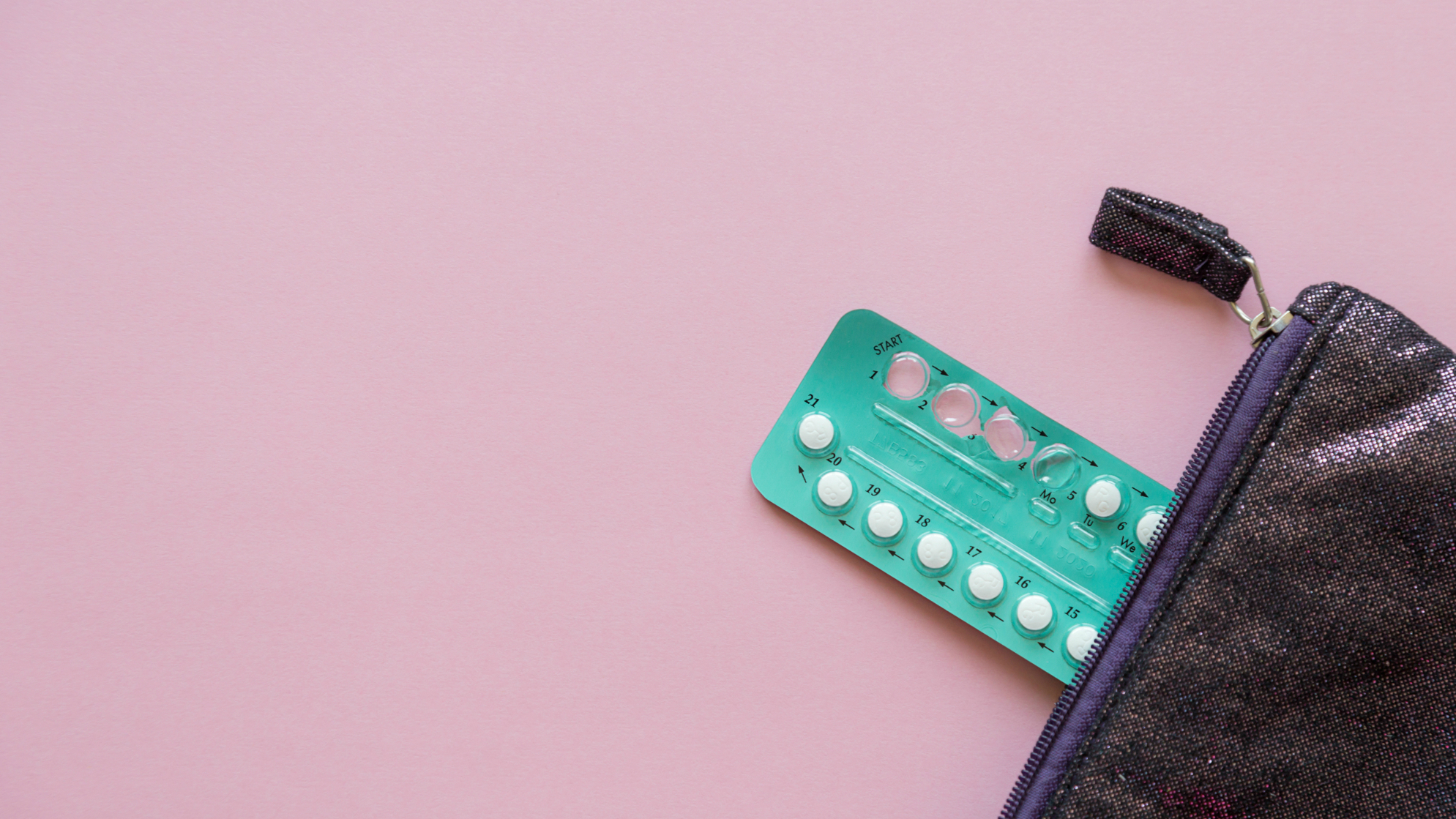What does the Pope have to do with the contraceptive pill?
From weight gain to mental health problems, the contraceptive pill has been linked to an array of health complaints since it first became available in the UK 60 years ago. Here Dr Zoe Williams weighs up the effects of the pill on our bodies, and whether its time to switch to something better.

From weight gain to mental health problems, the contraceptive pill has been linked to an array of health complaints since it first became available in the UK 60 years ago. Here Dr Zoe Williams weighs up the effects of the pill on our bodies, and whether its time to switch to something better.
Today, its almost impossible to imagine a world without that freedom to enjoy sex without the constant fear of pregnancy but until 1961, that was the reality. It’s no wonder that in 1961, when the pill first became available in Britain, it was viewed as a panacea. For the first time in history women had control over when and how often they became pregnant.
The pill remains the most popular contraceptive in Britain, with over 3 million women choosing to take it and 70% of all women in Britain having used the pill at some stage in their lives. But there are rising concerns about its suitability and suggested side effects. So is it time to move on from the pill - have we actually outgrown it? Are we polluting our bodies with synthetic hormones and suffering side effects unnecessarily? Lets break it down to basics.
How do the hormones in the pill actually stop pregnancy?
The pill replaces some of your body’s natural hormones with synthetic ones*. These hormones work to thicken the mucous in the cervix and/or prevent the release of an egg, and therefore prevent pregnancy. The way in which it works hasn’t really changed in the 60 years that it has been in existence, but the types and doses of hormones have evolved.
*The combined pill contains two types of synthetic hormone - Oestrogen and Progestogen. The Progestogen only pill contains just Progestogen.
Is it really that effective?
Yes! If taken religiously it’s over 99% effective at preventing pregnancy (but we are only human so it’s actually closer to 91%). Longer acting options, such as the injection, implant or intrauterine devices are almost 100% effective, as they remove the ‘human error’ element of forgetfulness. These LARCs (long acting reversible contraceptive) are the methods of contraception that I, as a GP would encourage women to try.
How safe is it?
When it comes to prescription drugs, safety is paramount. This is especially so when it comes to the Pill, not just because so many women take it, but also because it is a drug that is somewhat taken by choice, rather than absolute necessity to treat an illness or disease. Large public interest means that it has been under constant scrutiny by the media and has often been the victim of media ‘slamming’, with headline news alerting us to the extreme dangers of the pill. But are these dangers backed by evidence?
Celebrity news, beauty, fashion advice, and fascinating features, delivered straight to your inbox!
For the same reasons as identified above, the contraceptive pill has been under thorough scientific examination for over 50 years, and repeatedly the evidence tells us that the benefits of the pill heavily outweigh the risks*.
*This applies to the population at large. The pill is not safe for everyone and your GP or nurse will assess you individually to identify any risk factors that you have, which means that the pill is not safe for you.

What are the dangers?
Cancer
Although the pill is associated with a very slight increase in risk of breast cancer, this is offset by a reduced risk of getting cancer of the ovaries, womb and bowel, meaning that there is no overall increased risk of cancer from taking the pill
Blood clots - Deep Vein Thrombosis (DVT)
The synthetic hormones in the pill, particularly the progestogens can result in an activation of the blood clotting system. In a small number of cases it can result in a blood clot. Smoking, obesity and immobility are also risk factors for DVT.
Being on the pill can increase the risk of a blood clot by up to 6 times. This sounds like a lot, but it isn’t, because the background risk is so very small, it equates to between 3 and 10 additional cases of blood clot for every 10,000 women who take the pill for a year. To put this into context, in the months following pregnancy (which the pill is of course supposed to prevent), the risk of a blood clot is 200 times the background risk.
During the famous 'pill scare' of 1995, new unpublished research was reported on by the media, however messages they put out were misleading. They reported that newer brands of pill had double the risk of causing a blood clot than older brands. Whilst this statement was factually correct, it was only half of the story. The entire story was that the newer brands had the same level of risk that we had always thought and it turned out that the older brands had only half the risk that was previously thought, so were in fact even safer. There was absolutely no cause for concern by anyone taking or prescribing the pill.
The way in which this was reported by the media scared many women into stopping the pill. The following year there were additional 13,600 abortions, which equates to a 9% rise in abortions. There was a 25% increase in births. On top of that its estimated that this cost £57 million to the NHS.
How about the side effects so many of us put up with?
The synthetic hormones in the pill can cause side effects ranging from bloating, acne and breast soreness, to depression and even suicidality. A survey conducted by BBC Horizon last year found that many women felt these side effects should just be tolerated. With around 30 different types of contraceptive pill on the market, and at least 10 alternative methods of contraception no one should feel it necessary to endure negative side effects of the pill.
And let’s not forget that the pill can have some positive side effects, and is therefore sometimes prescribed for purposes other than contraception. These can include treating acne, alleviating PMT and managing painful, heavy periods.

In some women, side effects are caused by the fluctuation in hormones that comes with the standard practice of a 7-day pill free break each month. The reason for the break will never cease to amaze me. You’d think it was based on science, but it was actually introduced back in the 60s, with the sole intention that women would still bleed each month, in the hope that this would mean the pill would be accepted by the Pope and the catholic church. Of course the Pope did not accept it, but ludicrously this pointless practice has persisted until today. Not only does the break lead to side effects in some, it also increases the risk of getting pregnant whilst on the pill.’
Is male contraception ever going to be widely available?
There are many forms of female contraception, but for men the choices are sparse, with just condoms or vasectomy on offer. What about a male contraceptive pill, now wouldn’t that be an idea? Well it’s not for the want of trying. Scientists have been striving to perfect the male pill for almost as long as the female pill has been in existence. Trial after trial has had success in finding a pharmaceutical wonder that is effective at preventing pregnancy, but the same issues arise again and again, when tested on large numbers of men they report unacceptable side effects – bloating, mood disturbance, loss of libido, and headaches! Sound familiar?
The bottom line... should we be taking the pill or not?
Although the pill remains a safe and effective method of contraception, no woman out there should feel that she must or should tolerate negative side effects from the pill. We know that men certainly wouldn’t.
And though the pill remains very much a valid option, it may be time to re-evaluate the way in which it is taken, by getting rid of the 7-day pill break, as that would be what is best for us women, and who cares what the pope thinks about it?
Zoe’s take homes for taking the contraceptive pill
- The pill remains a safe and effective method of contraception
- LARC methods are more effective, as they eliminate the human error of forgetfulness
- When starting the pill (or a new type) keep a symptom diary for at least 3 months and if you have negative side effects go straight back to your nurse or GP to change it
- Consider speaking to your nurse or GP if you think the 7-day pill free week is contributing to side effects or you ever forget to take the first pills in the packet. Taking it continuously may be the solution
The leading destination for fashion, beauty, shopping and finger-on-the-pulse views on the latest issues. Marie Claire's travel content helps you delight in discovering new destinations around the globe, offering a unique – and sometimes unchartered – travel experience. From new hotel openings to the destinations tipped to take over our travel calendars, this iconic name has it covered.